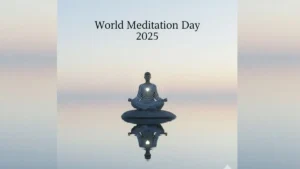On January 28, 2025, India will commemorate the 160th birth anniversary of one of its most revered freedom fighters, Lala Lajpat Rai. Known as the ‘Punjab Kesari’ or the ‘Lion of Punjab’, Lala Lajpat Rai was a towering figure in India’s struggle for independence. His contributions as a freedom fighter, politician, social reformer, and journalist have left an indelible mark on the nation’s history. This article delves into the life, achievements, and enduring legacy of Lala Lajpat Rai, exploring his role in the Indian National Congress, his leadership in the Arya Samaj, and his unwavering commitment to India’s freedom.
Early Life and Education
Birth and Family Background
Lala Lajpat Rai was born on January 28, 1865, in Dhudike, a small village in the Punjab region (now in present-day Moga district, Punjab, India). He was the eldest son of Munshi Radha Krishan, a government school teacher of Urdu and Persian, and his wife Gulab Devi. From a young age, Lajpat Rai was deeply influenced by the values of education, service, and patriotism instilled by his parents.
Early Education and Formative Years
Lala Lajpat Rai’s early education took place in Rewari, where his father was posted. He later attended Government College, Lahore, where he studied law. During his college years, he was exposed to the ideas of nationalism and social reform, which would shape his future endeavors. It was during this time that he became associated with the Arya Samaj, a reformist movement founded by Swami Dayanand Saraswati, which advocated for social equality, education, and the revival of Vedic values.
Career and Contributions to India’s Freedom Struggle
Legal Career and Entry into Politics
After completing his education, Lala Lajpat Rai moved to Hisar in 1886 to practice law. He quickly became a prominent figure in the legal community and was one of the founding members of the Bar Council of Hisar. Alongside his legal career, Rai was deeply involved in political activism. He founded the Hisar district branch of the Indian National Congress and became an active member of the Arya Samaj in Lahore. He also served as the founder editor of the Arya Gazette, a Lahore-based publication that promoted the ideals of the Arya Samaj.
Journalism and Advocacy
Lala Lajpat Rai was not only a lawyer and politician but also a prolific journalist and writer. He contributed regularly to several newspapers, including The Tribune, where he voiced his strong opinions on nationalism, social reform, and self-reliance. Through his writings, Rai sought to inspire Indians to rise against British colonial rule and to embrace the Swadeshi Movement, which emphasized the use of indigenous products to boost the local economy.
Role in the Indian National Congress
Lala Lajpat Rai played a pivotal role in the Indian National Congress (INC), emerging as one of its most prominent leaders. He was part of the famous ‘Lal Bal Pal’ trio, alongside Bal Gangadhar Tilak and Bipin Chandra Pal, who were known for their radical approach to achieving independence. Rai’s leadership in the INC was marked by his participation in several political agitations in Punjab, which often led to his arrest and imprisonment by the British authorities.
Deportation and Return
In 1907, Lala Lajpat Rai was deported to Mandalay (in present-day Myanmar) without trial, following his involvement in anti-British activities. However, due to widespread protests and lack of evidence, he was released after six months. Upon his return, Rai continued his activism with renewed vigor and was elected as the President of the Indian National Congress during the Calcutta Special Session of 1920.
Founding of Servants of the People Society
In 1921, Lala Lajpat Rai founded the Servants of the People Society, a non-profit welfare organization aimed at empowering Hindu society to fight against social evils such as the caste system, untouchability, and gender inequality. Rai believed that education and social reform were essential for India’s progress and advocated for the right of all individuals, regardless of caste or gender, to read and learn from the Vedas.
Leadership in the Protest Against the Simon Commission
The Simon Commission and Rai’s Opposition
One of the most significant moments in Lala Lajpat Rai’s life was his leadership in the protest against the Simon Commission in 1928. The Simon Commission, a British-led committee tasked with recommending constitutional reforms for India, was boycotted by Indians because it did not include any Indian members. Rai led a non-violent march in Lahore to protest against the Commission, delivering a powerful speech that galvanized the masses.
The Lathi Charge and Rai’s Martyrdom
During the protest, the superintendent of police, James A. Scott, ordered a brutal lathi charge on the demonstrators. Lala Lajpat Rai, who was at the forefront of the march, was severely injured in the assault. Despite his injuries, Rai remained defiant and famously declared, “Every blow on my body will prove a nail in the coffin of the British Empire.” However, the injuries he sustained proved fatal, and he passed away on November 17, 1928. His death sparked widespread outrage and further fueled the Indian independence movement.
Legacy and Inspiration
Influence on Future Freedom Fighters
Lala Lajpat Rai’s legacy extended far beyond his lifetime, inspiring a new generation of freedom fighters, including Bhagat Singh and Chandrashekhar Azad. His unwavering commitment to non-violent resistance, coupled with his emphasis on education and social reform, left a lasting impact on India’s struggle for independence.
Contributions to Education and Social Reform
Rai’s contributions to education and social reform were equally significant. He was a strong advocate for the Swadeshi Movement, encouraging Indians to use locally made products and to take pride in their cultural heritage. His efforts to promote social equality and education continue to inspire efforts to address issues such as caste discrimination and gender inequality in modern India.
Commemoration and Remembrance
Lala Lajpat Rai’s 160th birth anniversary serves as a reminder of his immense contributions to India’s freedom struggle and his enduring legacy as a leader, reformer, and patriot. His life and work continue to be celebrated through various memorials, institutions, and educational programs dedicated to his memory.
Summary of the Content
| Heading | Details |
|---|---|
| Why in News? | India is commemorating the 160th birth anniversary of Lala Lajpat Rai on January 28, 2025. |
| Who was Lala Lajpat Rai? | – Known as the ‘Punjab Kesari’ or the ‘Lion of Punjab’. |
| – A freedom fighter, politician, social reformer, and journalist. | |
| – Part of the ‘Lal-Bal-Pal’ trio with Bal Gangadhar Tilak and Bipin Chandra Pal. | |
| Early Life and Education | – Born on January 28, 1865, in Dhudike, Punjab (now Moga district). |
| – Son of Munshi Radha Krishan (a teacher) and Gulab Devi. | |
| – Studied law at Government College, Lahore, and was influenced by Arya Samaj during college. | |
| Contributions to Freedom Struggle | – Practiced law in Hisar and was a founding member of the Hisar Bar Council. |
| – Active member of the Indian National Congress (INC) and advocate of the Swadeshi Movement. | |
| – Arrested and deported to Mandalay in 1907 but returned after protests. | |
| – Led protests against the Simon Commission in 1928. | |
| Role in Social Reform | – Associated with Arya Samaj, promoting education, social equality, and Vedic values. |
| – Founded the Servants of the People Society in 1921 to combat caste discrimination, untouchability, and gender inequality. | |
| Simon Commission Protest | – Led a non-violent march against the Simon Commission in Lahore, 1928. |
| – Suffered severe injuries during a lathi charge, leading to his famous words: “Every blow on my body will prove a nail in the coffin of the British Empire.” | |
| – Passed away on November 17, 1928, due to injuries sustained during the protest. | |
| Legacy | – Inspired freedom fighters like Bhagat Singh and Chandrashekhar Azad. |
| – Advocated for Swadeshi products and cultural pride. | |
| – Contributions to education and social reform remain significant in modern India. | |
| Commemoration | – Celebrated through memorials, educational programs, and institutions dedicated to his memory. |



 World Basketball Day 2025 Celebrates Bas...
World Basketball Day 2025 Celebrates Bas...
 UN Celebrates Second World Meditation Da...
UN Celebrates Second World Meditation Da...
 Winter Solstice 2025 Observed on Sunday,...
Winter Solstice 2025 Observed on Sunday,...







